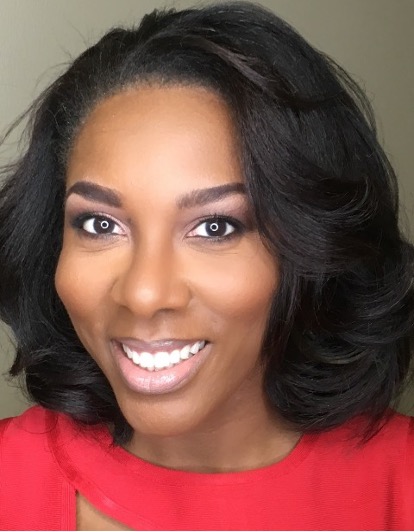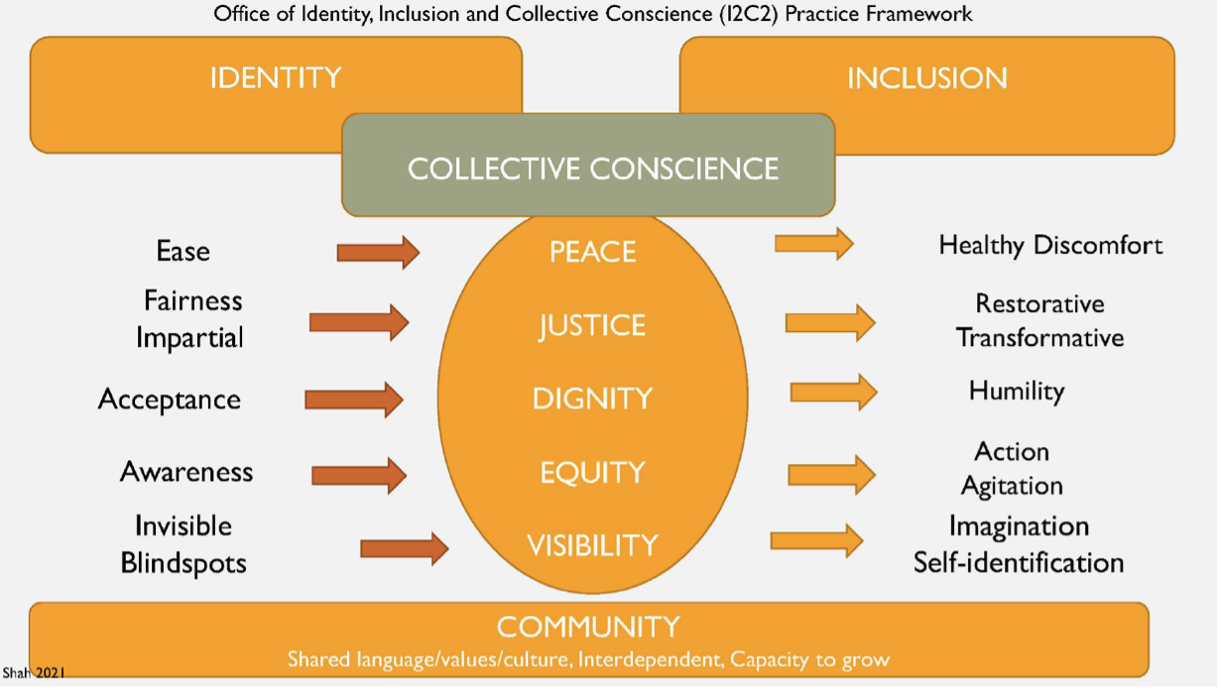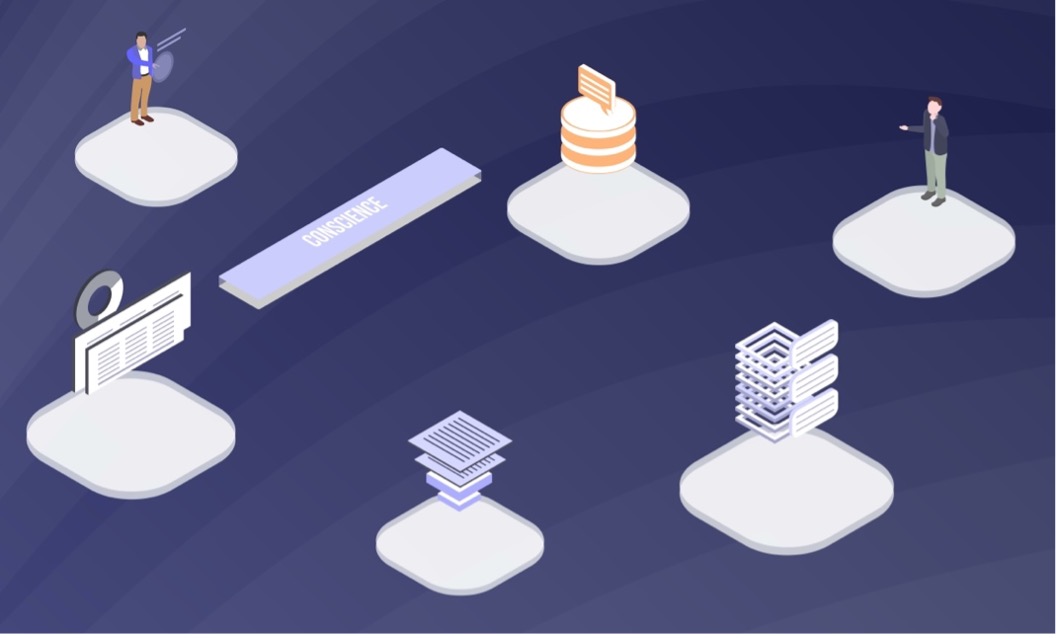 Shyla K. Fields, MBA
Shyla K. Fields, MBA
The Heersink School of Medicine Office for Diversity and Inclusion (Heersink ODI) had a Q&A with the Director of the Office of Identity, Inclusion, and Collective Conscience (I2C2), Shyla K. Fields, MBA about the work of her office and her role as a staff diversity liaison. In our interview, Fields speaks of going beyond Black History Month into our collective thinking.
The Office of Identity, Inclusion, and Collective Conscience (I2C2) was created to promote diversity and address inequalities in healthcare. It is a part of the UAB Department of Family and Community Medicine and works with department program, CU2RE, to educate students and faculty about the importance of diverse voices and access to care.
I2C2's mission is to fight against all forms of oppression in healthcare, both well-known and hidden. They strive to go beyond minimum DEI standards to create a more inclusive and participatory environment for all stakeholders.
I2C2's inaugural director, Brandi Shah, M.D., MPH, created a framework to help achieve these goals, promoting equitable access to care and eliminating health disparities in the healthcare sector.

Q: What is collective conscience?
A: The premise of this office is to get past the notion that 'it's just Diversity, Equity Inclusion' and bring in the collective thought type of work. So much of our work is under the anti-oppression lens, but there is also a need for peace, justice, dignity, equity, and visibility. That's what is on the hearts and minds of everyone we work with.
The whole collective conscience thought is a case for peace. If we realize that we don't know everyone's cultural background, we can all move to the collective thought of having healthy discomfort, where we can lead with humility, engage with curiosity, and get to know one another.
When thinking of the word peace, many people think of ease. But when you think of how people identify, not everyone has the privilege of having ease and peace. With collective conscience, we hope we get to the point where justice is both restorative and transformative.
The next element is dignity. Many people think, "oh, I will just accept everyone." But in having a collective conscience, dignity must be paired with humility. As you may notice, each of these aspects ties together, forming this community where we have a shared language and values of individual cultures.
Lastly, and perhaps most importantly, is the collective conscience of visibility. In this aspect, we open up our imagination and self-identification so that we think of ourselves and our culture in a way that we know we are different, but we welcome those differences.
Q: How can we use the collective conscience to illuminate Black history?
A: I think there is an opportunity to engage a culture that has been in place for the last 400 years to understand the resilience of particular people, 365 days a year. We set aside February, which is great, but we must go beyond the staples.
Black history is more than the big names of people like Martin Luther King, Jr. There are so many different people in the country, state, and even the city of Birmingham who has been game changers. So many other people have paved the way for standard human rights.
For example, the students who go through our CU2RE program get a chance to go to a newly erected museum in Montgomery that honors those known as the ‘Mothers of Gynecology.’ For those who don’t know, Anarcha, Betsey, and Lucy were three women held captive by J Marion Sims when he performed the first operation to repair the Vesicovaginal Fistula without consent or any form of anesthesia.
These, too, are stories we need to know.
I hope we build the muscle that goes beyond what we generally do during Black History Month. There are so many important stories that we want to tell, but we must actively change people's mindsets about how we speak about these months. We should always approach people with an attitude of appreciation and curiosity, as well as with the energy to move things forward. I want us to get to the point where there is a form of action that we can do to move the needle.
Q: How does I2C2 integrate into the community?
 We try to integrate programs within our department, but my goal for this office is to be a resource to the community, which includes our interpersonal and interprofessional departmental community, as well as the overarching DEI community at UAB.
We try to integrate programs within our department, but my goal for this office is to be a resource to the community, which includes our interpersonal and interprofessional departmental community, as well as the overarching DEI community at UAB.
One of our premier programs is the Anti-Oppression Individual Development (AO-IDP). Through this program, we offer an assessment followed by one-on-one sessions and curated resources for people to start doing this work.
When people talk about anti-oppression in the abstract, it can feel daunting. So we make it very practical and meet people where they are. We've done many listening sessions since the creation of this office, and what we found is that people understand the need for programming that brings us together, but they need to learn how toimplement the ideas.
That's why our programming tries to provide resources at the individual level—to show you what you can do in your lane and on your level of engagement. To determine that level, we start with an assessment that we have pulled from the a personal evaluation of anti-bias behaviors.
During these listening sessions, we've also found that some people don't feel safe sharing their thoughts about diversity, equity, and inclusion; or their ideas about what's happening in the world and within the workplace. That's why it is essential to start with an assessment—it digs into anti-biased behaviors, a person's past and current feelings.
Through directing this office, I've learned a lot of people are on the brink of allyship. They're asking themselves, 'How do I hold space for someone without being the hero? What does that look like?’
Q: What happens after the initial assessment?
Next, we do a one-on-one session where we talk about goal setting. Participants answer questions such as: 'Where are you?' and 'Where do you want to be?'The sessions are an excellent opportunity for introspection as they force us to look at how people learn and engage with messaging. Whether on social media or another streaming app, we need to meet people where they are.
If someone says their hobby is reading comic books, we want to ensure that we coincide anti-biased behaviors with comic books and reading materials they might not know about. We do this because it opens conversations about why a superhero is combating anti-racism. These interests are different for each person. We've had people who knit, dance, hike, and so on.
Q: How do you measure progress?
A: Currently, we're in the genesis stage. We've had a couple of cohorts to go through the AO-IDP process and are in the process of administrating their follow-up assessments.
The six-month assessment is where we see if there has been a progression toward reaching the earlier goals. We discuss the benefits of having these goals and the resources that have impacted them the most. After evaluating their progress, we do more goal setting and reissuing of resources.
The great thing about this program is that we intend it to be cyclical in resource sharing. When people want to change the algorithm, they can. They have abundant resources. If they want to learn via podcast, they could tap into this person who also loves podcasts. They are encouraged to engage with the document of resources created by my office that align with their goals. The hope is that the resources we've provided plug right into their lives and shift their engagement, and they can find new resources on their own and share them with my office and me.
Q: Can your position as director of I2C2 work synergistically with your role as a Heersink ODI staff diversity liaison?
A: Being a staff diversity liaison dovetails nicely into my position as director of I2C2 because it allows me to see how this work applies at the individual level and keeps me aware of the resources available across all Heersink School of Medicine DEI spaces. Making connections, finding resources to share, and being in the space of doing the work, are all important to me. The correlation is being culturally aware, culturally humble, and leading with curiosity wherever you may be.
Q: What is the highway of anti-oppression work?
A: We are all on the highway of anti-oppression work. We're doing the work in some way, whether it be learning or unlearning. In fact, many of us need to stop and pull over to the side and heal. Some people are in the far-right lane, where it's slower, and they're learning and unlearning. Some people are in the middle lane, revving up to allyship, activism, and putting in the work. Others are full speed ahead where there is not only activism and allyship but continuing to learn and teach others.
Like a highway, you have the autonomy to move regardless of where you are. Sometimes, knowing when and how you should move on this highway is important. It's a form of action to speak and understand your truth. We should appreciate each other's culture and be conscious of others—understanding how they're moving because we are all on this highway together.